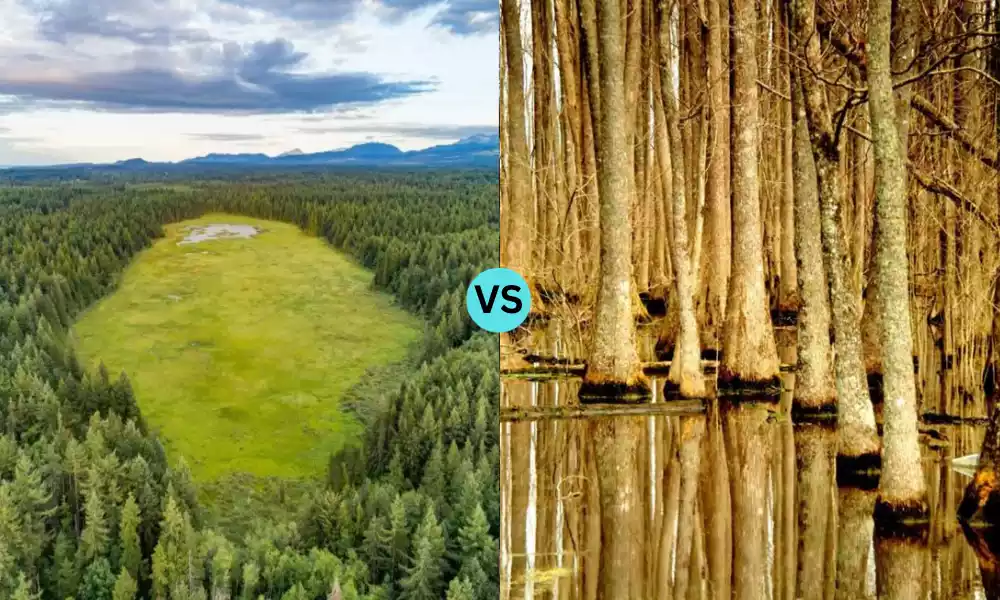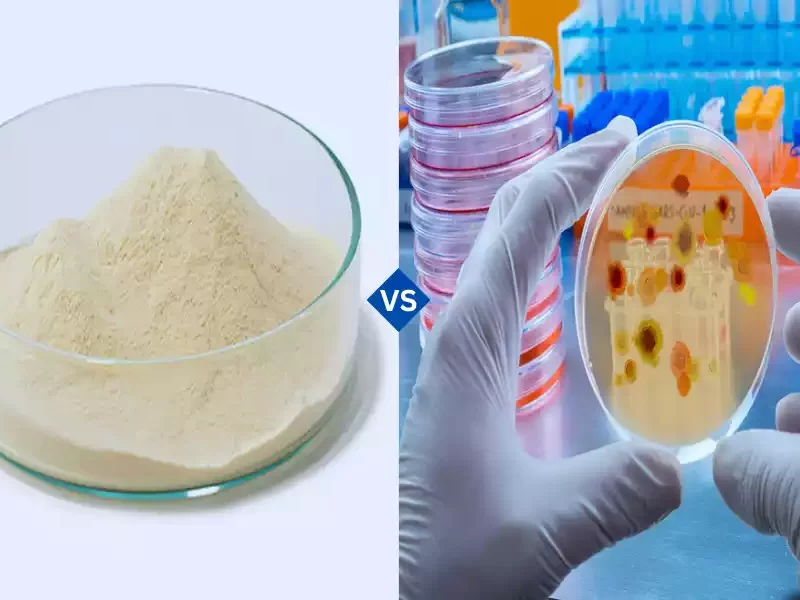Marsh and Swamp: Wetlands, nature’s water filters, come in various forms, each with distinct characteristics and ecological roles. Among the most commonly recognized wetlands are marshes and swamps. Marshes are primarily herbaceous wetlands, dominated by grasses, reeds, and other soft-stemmed plants that thrive in waterlogged conditions. In contrast, swamps are wooded wetlands, characterized by the presence of trees and shrubs, often found in low-lying areas adjacent to rivers or lakes.
Both these ecosystems play crucial roles in maintaining water quality, supporting rich biodiversity, and acting as buffers against natural calamities like floods. As we delve deeper, the nuances that differentiate a marsh from a swamp become more apparent, emphasizing the significance and diversity of our planet’s wetland habitats.
What is Marsh?
A Marsh is a type of wetland that is characterized by the presence of standing water and dominated by herbaceous plants, including grasses, sedges, reeds, and rushes. Unlike swamps, which are dominated by woody plants and trees, marshes typically do not have trees or large shrubs. The water level in a marsh can vary, but it is usually present either permanently or for a significant part of the year.
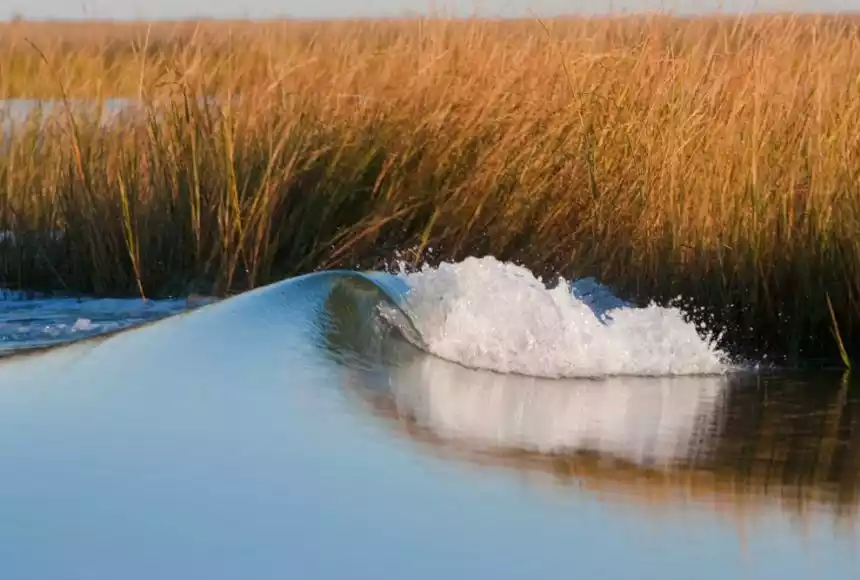
Marshes play a vital ecological role, serving as habitats for various wildlife, especially bird species, and acting as natural water filters, removing pollutants and sediments from water that flows through them. They can be found in various climates and on every continent except Antarctica. Depending on the salinity of the water, marshes can be categorized as freshwater, brackish, or salt marshes.
Characteristics of Marshes
Marshes are diverse and intricate ecosystems, and they possess several defining characteristics. Here’s an overview of the key characteristics of marshes:
- Water Presence: Marshes are wetlands, meaning they are inundated with water, either permanently or for extended periods. The water level might fluctuate but is generally shallow.
- Vegetation Type: Marshes are dominated by herbaceous plants. These are non-woody plants like grasses, reeds, rushes, and sedges.
- Soil: The soils in marshes are typically saturated, waterlogged, and anaerobic (lacking oxygen) for extended periods. This leads to slow decomposition rates and the accumulation of organic material.
- Lack of Trees: Unlike swamps, marshes rarely have trees. If they do, the trees are sparse and not the dominant vegetation.
- Salinity Levels: Marshes can vary in salinity. Depending on the salt content, they can be categorized as:
- Freshwater Marshes: Low salinity as they are away from the influence of the sea.
- Brackish Marshes: Intermediate salinity levels, often found where freshwater mixes with saltwater.
- Salt Marshes: High salinity, usually located along coastlines and influenced by tides.
- Biodiversity: Marshes are habitats to a rich variety of life forms, especially birds. Many species of waterfowl, waders, and migratory birds depend on marshes for breeding, feeding, or as stopover points.
- Water Filtration: Marshes act as natural filters. They trap sediments, absorb pollutants, and break down certain waste materials, improving water quality.
- Carbon Sequestration: Marshes, like other wetlands, capture and store carbon dioxide, playing a role in combating climate change.
- Hydrological Importance: Marshes absorb excess rainwater, reducing flood risks in nearby areas. They also release water during drier periods, helping to maintain water flow.
- Location: Marshes can be found worldwide, from temperate regions to tropical zones. They often occur in low-lying areas and can be found inland or near coastlines, wherever water accumulates.
- Tidal Influence: Coastal marshes, especially salt marshes, are influenced by tides. They experience regular inundation and draining, which shapes their ecology and plant communities.
Recognizing and understanding these characteristics is crucial for conservation efforts, as marshes play a significant role in maintaining ecological balance and supporting biodiversity.
Types of Marshes
Marshes can be classified based on various factors, but one of the most common categorizations is based on their salinity. Here’s a breakdown of the main types of marshes:
- Freshwater Marshes:
- Location: Typically found inland, away from the direct influence of the ocean.
- Water Source: Mainly from rivers, lakes, streams, or ground water.
- Vegetation: Dominated by herbaceous plants such as cattails, bulrushes, pickerelweed, and various sedges and grasses.
- Wildlife: Home to a diverse range of species including amphibians, reptiles, birds, insects, and freshwater fish.
- Salt Marshes:
- Location: Found along coastlines, often between land and saltwater or brackish water, influenced by tides.
- Salinity: Salty water, due to the mixing of seawater and freshwater.
- Vegetation: Plants adapted to salty conditions, including cordgrass (Spartina), glasswort, and sea lavender.
- Wildlife: Provides habitat for crabs, mollusks, wading birds, and many types of fish.
- Brackish Marshes:
- Location: Transitional zones between freshwater and saltwater marshes, often found where rivers meet the sea.
- Salinity: Contains a mix of fresh and salt water.
- Vegetation: A combination of both freshwater and saltwater plant species.
- Wildlife: Supports both freshwater and marine species, making it a diverse environment.
- Tidal Marshes:
- Location: Areas influenced by tides, but they can be either freshwater, brackish, or saltwater.
- Tidal Influence: Experience regular flooding and draining with the tidal cycles.
- Vegetation: Depending on the salinity, can range from freshwater grasses to typical saltwater marsh plants.
- Wildlife: Often see a mix of marine and freshwater species.
- Prairie Potholes:
- Location: Predominantly found in the northern parts of North America, especially the Great Plains.
- Origins: Created by glaciers during the last ice age.
- Vegetation: Grasses, sedges, and other herbaceous plants.
- Wildlife: Vital for North American migratory waterfowl.
- Vernal Pools:
- Location: Can be found in various parts of the world, including forests, grasslands, and deserts.
- Duration: Temporary marshes that fill with water seasonally.
- Vegetation: Various grasses, herbaceous plants, and sometimes trees around the edges.
- Wildlife: Important breeding grounds for certain species of amphibians and invertebrates.
Each type of marsh supports its own unique ecosystem and plays a vital role in the larger environmental context, whether it’s serving as a breeding ground for migratory birds, filtering pollutants from water, or acting as buffers against storm surges.
What is Swamp?
A Swamp is a type of wetland that is characterized by the presence of standing or slow-moving water and is dominated by woody plants, such as trees and shrubs. Unlike marshes, which are primarily composed of herbaceous vegetation, swamps have a significant amount of tall, woody vegetation, which can include species like cypress, mangrove, and willow.
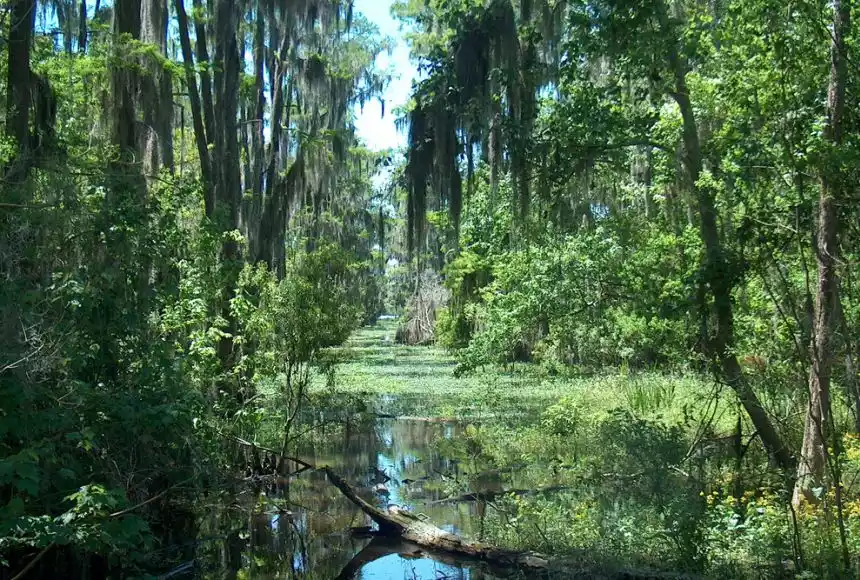
The water in swamps can be fresh, brackish, or saline, and the soil is often very rich in organic material due to the decomposition of plant and animal matter. Swamps play essential ecological roles by providing habitats for a diverse range of wildlife, storing floodwaters, and filtering pollutants. They can be found in many parts of the world and are especially common in low-lying areas near rivers or coastlines.
Features of Swamps
Swamps are intricate ecosystems with distinct features that differentiate them from other wetland types. Here are the primary characteristics and features of swamps:
- Water Presence: Swamps are perennially wet areas, either from standing or slow-moving water. The water can be fresh, brackish, or saline, depending on the swamp’s location.
- Woody Vegetation: Swamps are characterized by the dominance of trees and shrubs. This is a key feature that distinguishes them from marshes, which are dominated by herbaceous vegetation.
- Soil: Swamp soils are often waterlogged, leading to anaerobic (oxygen-poor) conditions. The rich, organic soils result from the slow decomposition of plant and animal matter.
- Biodiversity: Swamps are home to a wide variety of wildlife, including birds, mammals, reptiles, amphibians, fish, and invertebrates. They serve as critical habitats and breeding grounds for many species.
- Hydrology: The water in swamps often originates from surface runoff, rivers, lakes, or tidal influxes. In coastal areas, tidal swamps may experience daily tidal changes.
- Root Systems: Many trees and plants in swamps have specially adapted root systems, like pneumatophores (breathing roots) or buttress roots, to cope with the waterlogged conditions.
- Location: Swamps can be found globally, from the tropics to temperate zones. They often occur in low-lying areas near rivers, lakes, or coastlines.
- Ecological Significance: Swamps play a vital role in water purification by filtering out pollutants and sediments. They also help in flood control by absorbing excess rainwater.
- Carbon Sequestration: Like other wetlands, swamps act as carbon sinks, capturing and storing carbon dioxide from the atmosphere.
- Human Impact: Swamps have historically been drained or altered for agriculture, urban development, and other human activities, leading to a significant reduction in swamp areas globally.
- Cultural Significance: Many swamps have cultural or spiritual importance for local communities, featuring in local myths, legends, and history.
- Types: Depending on the dominant vegetation and location, swamps can be categorized further:
- Mangrove Swamps: Located in tropical and subtropical tidal areas, dominated by mangrove trees.
- Cypress Swamps: Common in the southeastern U.S., dominated by cypress trees.
- Hardwood Swamps: Found in temperate regions, characterized by a mix of deciduous trees.
- Coniferous Swamps: Dominated by evergreen trees, like pines or spruces.
Swamps, with their dense vegetation and complex ecosystems, are essential for global biodiversity and offer numerous ecological services beneficial to humans and the environment.
Types of Swamps
Swamps can be categorized based on their location, water salinity, and dominant vegetation. Here are the main types of swamps:
- Freshwater Swamps:
- Location: Found inland, usually adjacent to rivers, streams, or lakes.
- Vegetation: Can vary widely based on region, but common trees include cypress, black gum, and water tupelo. Shrubs, ferns, and other understory plants also abound.
- Water Source: Primarily fresh water from rainfall, streams, and rivers.
- Mangrove Swamps (or Mangals):
- Location: Found in tropical and subtropical regions along coastlines.
- Vegetation: Dominated by mangrove trees, which are salt-tolerant and have specialized roots called pneumatophores.
- Salinity: Brackish to saltwater, influenced by tidal movements.
- Saltwater Swamps:
- Location: Often found along coastlines or estuarine areas.
- Vegetation: Dominated by salt-tolerant trees and shrubs.
- Salinity: High salt content due to regular or occasional influx of seawater.
- Cypress Swamps:
- Location: Common in the southeastern U.S., especially in the Gulf Coast region.
- Vegetation: Dominated by cypress trees, often accompanied by other water-loving trees and shrubs.
- Water Source: Typically freshwater, though some can be influenced by tidal movements and have slightly brackish water.
- Hardwood Swamps:
- Location: Found in temperate regions.
- Vegetation: Dominated by hardwood trees like oaks, maples, and ashes. Often accompanied by various shrubs and ferns.
- Water Source: Primarily freshwater.
- Coniferous Swamps:
- Location: Found in cooler climates or higher latitudes.
- Vegetation: Dominated by coniferous trees like spruces, pines, and larches.
- Water Source: Freshwater, often from snowmelt or rainfall.
- Shrub Swamps:
- Location: Can be found in various climates and regions.
- Vegetation: Dominated by shrubs rather than trees. Common shrubs might include buttonbush, alders, or willows.
- Water Source: Typically freshwater, though some can be influenced by nearby saltwater sources.
- Pocosin:
- Location: Predominantly found in the southeastern U.S., especially the coastal plain of North Carolina.
- Characteristics: Elevated compared to the surrounding landscape. Acidic, nutrient-poor, and waterlogged soils.
- Vegetation: Dense shrub layer with scattered pond pine.
Each type of swamp plays a unique ecological role, supporting a diverse array of wildlife and providing vital ecosystem services, such as water filtration, carbon storage, and habitat provision.
Comparison table of Marsh and Swamp
Below is a comparison table highlighting the differences between a marsh and a swamp:
| Feature | Marsh | Swamp |
|---|---|---|
| Primary Vegetation | Herbaceous plants (grasses, sedges, reeds) | Woody plants (trees and shrubs) |
| Presence of Trees | Rarely, if ever | Commonly present |
| Soil Composition | Often waterlogged and mineral-rich | Rich in organic material due to decomposition |
| Water Type | Can be fresh, brackish, or salt | Typically fresh or brackish; some are saline |
| Water Depth | Variable; often shallow | Variable; can be deeper than marshes |
| Ecological Role | Habitat for birds, water filtration | Habitat for diverse wildlife, floodwater storage |
| Location | Found in various climates; often near coasts | Low-lying areas, often near rivers or coastlines |
| Examples of Vegetation | Reeds, cattails, bulrushes | Cypress, mangrove, willow |
| Wildlife | Waterfowl, amphibians, small fish | Alligators, large fish, amphibians, birds |
This table provides a general overview. It’s worth noting that the specifics can vary based on geographic region and other environmental factors.
What are the similarities between Marsh and Swamp?
Marshes and swamps share several similarities due to their classification as wetlands:
-
- Water Presence: Both are characterized by the persistent presence of water, either seasonally or year-round.
- Biodiversity: They serve as habitats for a rich variety of plants, animals, and microorganisms, offering critical nesting and breeding grounds.
- Soil Type: Both have waterlogged soils that can be anaerobic (low in oxygen).
- Ecosystem Services: Marshes and swamps play crucial roles in water purification, flood control, carbon sequestration, and nutrient cycling.
- Human Interaction: Both have historically been drained or altered for agriculture, settlement, or other land uses but are now often recognized for their ecological value and are the focus of conservation efforts.
- Sensitivity: Both ecosystems are sensitive to changes in water quality and quantity and are vulnerable to pollution and climate change impacts.
Ecological Importance Marsh and Swamp
Marshes and swamps, as integral components of wetland ecosystems, play several crucial roles in the environment. Their ecological importance extends to both local habitats and the global ecosystem.
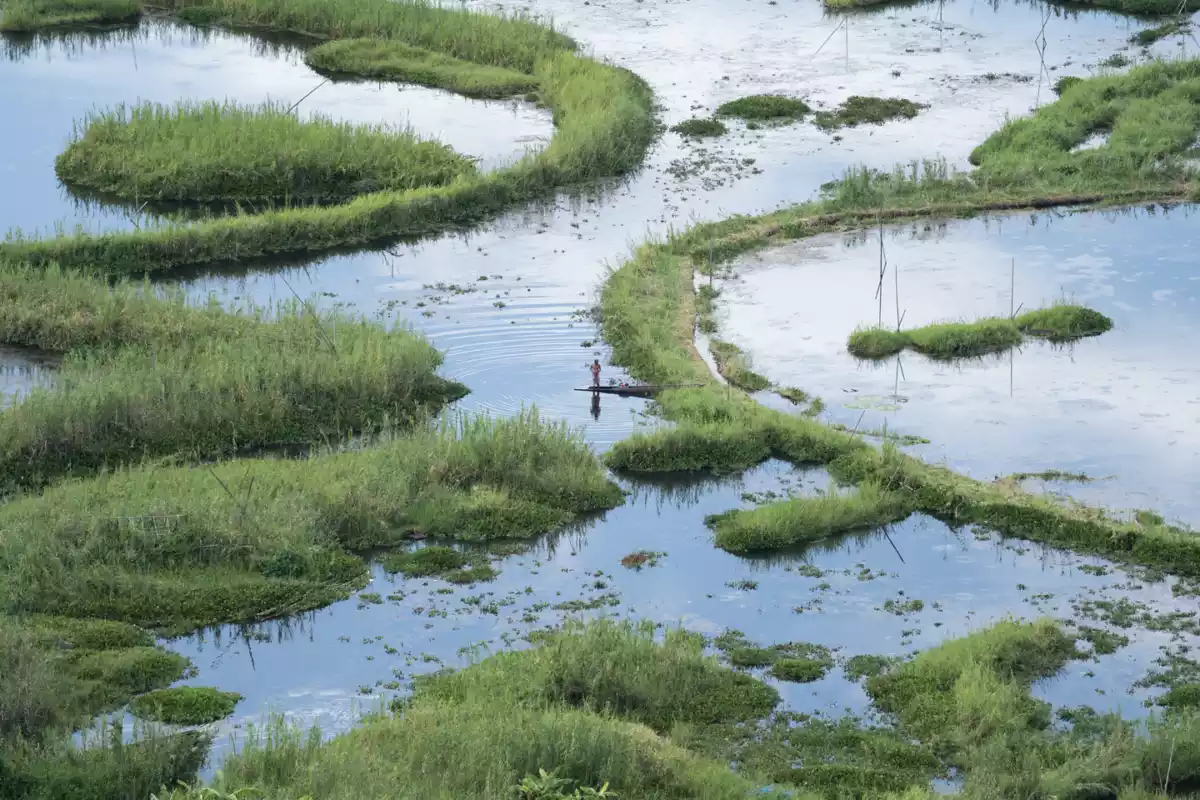
Here are some of the significant ecological roles and benefits they provide:
- Biodiversity Hotspots:
- Both marshes and swamps are rich in biodiversity. They serve as habitats for various species of plants, animals, birds, and aquatic life, some of which are found only in these ecosystems.
- They act as breeding and nesting grounds for many species, especially migratory birds.
- Water Purification:
- These wetlands act as natural filters. As water flows through them, pollutants, sediments, and excess nutrients are trapped and absorbed, leading to cleaner water downstream.
- The vegetation in marshes and swamps can absorb and transform harmful pollutants, reducing their impact on aquatic ecosystems.
- Flood Control:
- Marshes and swamps act as natural sponges, absorbing and storing excess rainwater. This reduces the speed and volume of runoff, decreasing the risk of flooding in adjacent areas.
- Coastal marshes serve as buffers against storm surges, absorbing the impact and reducing the extent of flooding.
- Carbon Sequestration:
- Wetlands, including marshes and swamps, are among the world’s most effective carbon sinks. They capture and store carbon dioxide, helping mitigate the effects of climate change.
- The anaerobic conditions in wetlands slow down decomposition, leading to carbon accumulation in the form of peat in some wetlands.
- Erosion Control:
- The intricate root systems of marsh and swamp plants stabilize soil, preventing erosion.
- Coastal marshes reduce the impact of wave action, protecting shorelines from erosion.
- Groundwater Recharge:
- Wetlands, including marshes and swamps, can facilitate the replenishment of aquifers by allowing water to slowly seep into the ground.
- Climatic Regulation:
- By storing large amounts of water, wetlands help in moderating local and even regional climate conditions.
- Evapotranspiration from wetlands contributes to local humidity levels and can influence local rainfall patterns.
- Economic Importance:
- Both marshes and swamps support fisheries by providing breeding grounds for many commercially important fish species.
- They offer opportunities for ecotourism and recreational activities, benefiting local economies.
- Cultural and Aesthetic Value:
- Many societies value wetlands for their spiritual, educational, and aesthetic attributes. They play roles in folklore, local traditions, and serve as spaces for reflection and inspiration.
- Nutrient Cycling:
- Marshes and swamps play a pivotal role in nutrient cycling. They break down organic materials, releasing essential nutrients back into the water and soil.
Preserving marshes and swamps is vital not just for the biodiversity they host but also for the myriad ecological services they provide, many of which have direct implications for human survival and well-being.
Human Interactions
Human interactions with marshes and swamps have been extensive and varied, spanning from early civilizations to modern times. These interactions can be positive, negative, or a mix of both. Here’s an overview of human interactions with these wetland ecosystems:
- Habitat and Settlement:
- Historically, wetlands were seen as obstacles to human settlement. Some communities, however, learned to live in harmony with these environments, often building structures on stilts or creating floating villages.
- In many cultures, wetlands were places of spiritual significance or were associated with myths and legends.
- Agricultural Development:
- Humans have drained marshes and swamps for agricultural purposes for centuries. While this converts wetlands into arable land, it also disrupts ecosystems and affects biodiversity.
- Rice paddies, a significant global food source, are often developed in wetland-like conditions, resembling managed marshes.
- Resource Extraction:
- Swamps, especially peat swamps, are mined for peat, a valuable fuel source in some regions.
- Marshes and swamps have been exploited for timber, reeds, and other plant resources.
- Wetlands are vital for fisheries, providing breeding grounds for many fish species.
- Pollution:
- As urbanization and industrialization increased, marshes and swamps have sometimes been treated as waste disposal sites, leading to water pollution and habitat degradation.
- Agricultural runoff carrying pesticides and fertilizers can enter these ecosystems, disrupting their natural balance.
- Infrastructure Development:
- Many wetlands have been filled or altered to build roads, towns, and other infrastructure. Such developments disrupt water flow, affecting both the immediate area and regions downstream.
- Dams and water diversion projects can significantly impact the health of downstream marshes and swamps.
- Conservation and Restoration:
- Recognizing their ecological value, many modern conservation efforts focus on preserving and restoring marshes and swamps. Wetland restoration projects aim to bring these habitats back to a more natural state.
- Protected areas, like national parks or wildlife refuges, often include wetland regions.
- Recreation and Tourism:
- Many people are drawn to the unique beauty of marshes and swamps. These areas have become popular for bird-watching, boating, fishing, and photography.
- Eco-tourism initiatives can provide sustainable income sources for local communities while promoting wetland conservation.
- Scientific Research:
- Wetlands are valuable sites for scientific research, offering insights into ecology, hydrology, and biology. They serve as natural laboratories where scientists can study interactions between organisms and their environments.
- Cultural Inspiration:
- Throughout history, marshes and swamps have inspired literature, art, and folklore. They often carry symbolic meanings, representing places of mystery, transformation, or even danger.
- Climate Mitigation:
- With increasing awareness of climate change, the carbon sequestration capabilities of marshes and swamps have become particularly significant. Protecting and restoring these ecosystems can contribute to climate change mitigation strategies.
Understanding these interactions is vital for creating balanced policies and practices that recognize the value of marshes and swamps while accommodating human needs. As global awareness of environmental issues grows, the focus is shifting towards more sustainable interactions with these crucial ecosystems.
Notable Examples Around the World
Marshes and swamps are distributed globally and, in many places, are recognized for their ecological, cultural, and aesthetic value. Here are some notable examples of marshes and swamps from different parts of the world:
- Everglades (USA):
- Location: Florida
- Type: Freshwater swamp and marsh
- Notability: Often referred to as the “River of Grass”, the Everglades is a unique wetland ecosystem known for its diverse wildlife, including the American alligator and the Florida panther.
- Okavango Delta (Botswana):
- Location: Northern Botswana
- Type: Inland delta and marsh
- Notability: One of the world’s largest inland deltas, the Okavango is a crucial habitat for African wildlife, including elephants, hippos, and lions.
- Sundarbans (India and Bangladesh):
- Location: Delta of the Ganges, Brahmaputra, and Meghna rivers
- Type: Mangrove swamp
- Notability: The Sundarbans is the largest mangrove forest in the world, home to the Bengal tiger and many other species.
- Pantanal (Brazil, Bolivia, Paraguay):
- Location: South America
- Type: Wetland and marsh
- Notability: The world’s largest tropical wetland area, the Pantanal boasts incredible biodiversity, especially for birdlife.
- Danube Delta (Romania and Ukraine):
- Location: Where the Danube River meets the Black Sea
- Type: River delta and marsh
- Notability: One of Europe’s best-preserved deltas, it’s a sanctuary for birds and fish.
- Kakadu National Park (Australia):
- Location: Northern Territory, Australia
- Type: Freshwater swamp and marsh
- Notability: A UNESCO World Heritage site, it features diverse ecosystems and is rich in Aboriginal cultural sites.
- Ciénaga Grande de Santa Marta (Colombia):
- Location: Caribbean coast of Colombia
- Type: Marsh and lagoon
- Notability: One of South America’s most important lagoons, it’s recognized for its biodiversity and mangrove forests.
- Camargue (France):
- Location: Rhône River delta, southern France
- Type: Salt marsh and lagoon
- Notability: Known for its wild white horses, pink flamingos, and traditional cowboy culture.
- Sudd (South Sudan):
- Location: Nile River
- Type: Freshwater swamp
- Notability: One of the world’s largest freshwater wetlands, the Sudd is a vast swampy area that plays a significant role in the flow of the Nile.
- Tasek Bera (Malaysia):
- Location: Peninsular Malaysia
- Type: Freshwater swamp
- Notability: Malaysia’s largest freshwater swamp, it’s a biodiversity hotspot and an important site for indigenous communities.
- Okefenokee Swamp (USA):
- Location: Georgia and Florida
- Type: Peat-filled freshwater swamp
- Notability: One of North America’s most unspoiled swamps, it’s home to diverse wildlife, including black bears and various bird species.
These marshes and swamps are not just ecological marvels but are also culturally and historically significant in many regions. Conservation efforts are ongoing to protect these vital ecosystems from threats like pollution, deforestation, and climate change.
Conclusion
Marshes and swamps, as integral components of the world’s wetland ecosystems, play vital roles in maintaining ecological balance, supporting rich biodiversity, and providing essential services that benefit both nature and humans. From acting as natural water purifiers and carbon sinks to serving as protective buffers against natural disasters, their importance is multifaceted.
Human interactions with these environments have been complex, with a history of both exploitation and reverence. Recognizing the unparalleled ecological, cultural, and economic values of marshes and swamps is crucial in a rapidly changing world, emphasizing the need for their conservation and sustainable management.

